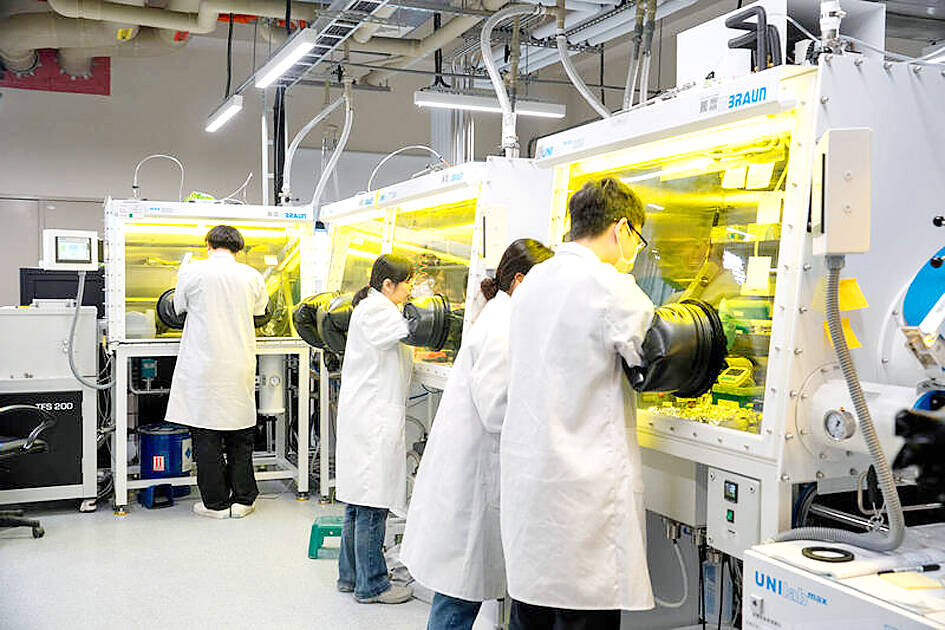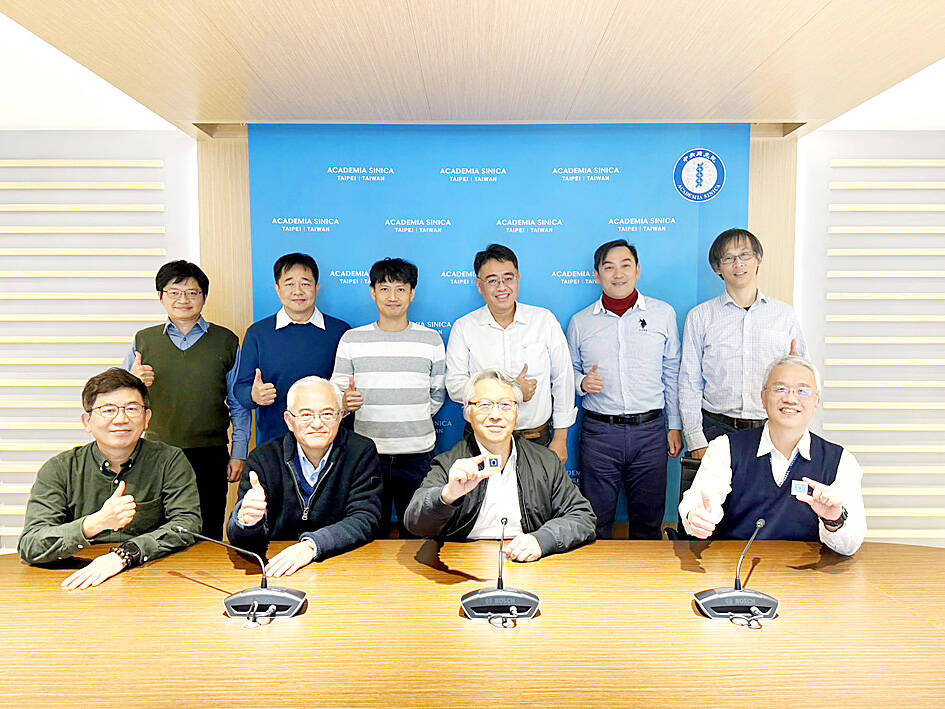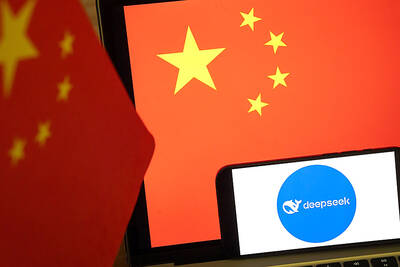Taiwan has developed next-generation solar cell components that would boost solar-cell efficiency by more than 31 percent, Academia Sinica said yesterday.
Boosting solar-cell efficiency is key in developing solar energy in the nation, given the limited space available to install solar panels, the institute said in a statement.
Currently, the highest light-to-electricity conversion efficiency achieved by silicon solar cells is about 22 to 24 percent, the institute said, adding that it is nearly impossible to increase efficiency by 30 percent with silicon solar cells alone.

Photo courtesy of Academia Sinica
However, perovskite films can be combined with silicon solar cells to form stacked perovskite/silicon solar cells to improve light-to-electricity conversion efficiency, it said.
The institute formed a research group to develop perovskite/silicon tandem solar cells after Academia Sinica President James Liao (廖俊智) finalized the decision, with its own researchers being joined by those from National Cheng Kung University, National Tsing Hua University and Ming Chi University of Technology, it said.
The research team succeeded in creating perovskite/silicon tandem solar cells in two years, boosting the light-electricity conversion efficiency to more than 31 percent, Liao said.

Photo courtesy fo the Academia Sinica via CNA
“The efficiency is more than 30 percent higher than solar cell products currently on the market. Compared with the solar power generation devices deployed in the early years, the efficiency has increased by nearly 50 percent. Power generation can be increased without increasing the properties required to develop solar energy,” he said.
Silicon solar cell modules can only absorb part of the wavelength of sunlight, resulting in limited conversion efficiency. Tandem solar cells use the upper layer of perovskite to absorb photons that cannot be absorbed by silicon crystal, and the remaining photons are absorbed by the lower layer of silicon crystal, thereby increasing the conversion efficiency, the institute said.
The research team has broken through several key connection layer technologies, successfully laminated perovskite films on silicon cells and reduced interface losses, thus completing the production of small-area two-terminal cell components. The light-electricity conversion efficiency has reached 31.5 percent, the institute said.
There is sufficient supply of materials to produce perovskite/silicon solar cells, which can be manufactured at lower costs, run efficiently and are recyclable, the team said.
“The result shows that Taiwan has the ability to produce perovskite/silicon tandem solar cells, which also have a high potential to be commercialized,” the team said.

MISINFORMATION: The generated content tends to adopt China’s official stance, such as ‘Taiwan is currently governed by the Chinese central government,’ the NSB said Five China-developed artificial intelligence (AI) language models exhibit cybersecurity risks and content biases, an inspection conducted by the National Security Bureau (NSB) showed. The five AI tools are: DeepSeek, Doubao (豆包), Yiyan (文心一言), Tongyi (通義千問) and Yuanbao (騰訊元寶), the bureau said, advising people to remain vigilant to protect personal data privacy and corporate business secrets. The NSB said it, in accordance with the National Intelligence Services Act (國家情報工作法), has reviewed international cybersecurity reports and intelligence, and coordinated with the Ministry of Justice Investigation Bureau and the National Police Agency’s Criminal Investigation Bureau to conduct an inspection of China-made AI language

LIMITS: While China increases military pressure on Taiwan and expands its use of cognitive warfare, it is unwilling to target tech supply chains, the report said US and Taiwan military officials have warned that the Chinese People’s Liberation Army (PLA) could implement a blockade within “a matter of hours” and need only “minimal conversion time” prior to an attack on Taiwan, a report released on Tuesday by the US Senate’s China Economic and Security Review Commission said. “While there is no indication that China is planning an imminent attack, the United States and its allies and partners can no longer assume that a Taiwan contingency is a distant possibility for which they would have ample time to prepare,” it said. The commission made the comments in its annual

‘TROUBLEMAKER’: Most countries believe that it is China — rather than Taiwan — that is undermining regional peace and stability with its coercive tactics, the president said China should restrain itself and refrain from being a troublemaker that sabotages peace and stability in the Indo-Pacific region, President William Lai (賴清德) said yesterday. Lai made the remarks after China Coast Guard vessels sailed into disputed waters off the Senkaku Islands — known as the Diaoyutai Islands (釣魚台) in Taiwan — following a remark Japanese Prime Minister Sanae Takaichi made regarding Taiwan. Takaichi during a parliamentary session on Nov. 7 said that a “Taiwan contingency” involving a Chinese naval blockade could qualify as a “survival-threatening situation” for Japan, and trigger Tokyo’s deployment of its military for defense. Asked about the escalating tensions

DISPUTE: A Chinese official prompted a formal protest from Tokyo by saying that ‘the dirty head that sticks itself out must be cut off,’ after Takaichi’s Taiwan remarks Four armed China Coast Guard vessels yesterday morning sailed through disputed waters controlled by Japan, amid a diplomatic spat following Japanese Prime Minister Sanae Takaichi’s comments on Taiwan. The four ships sailed around the Senkaku Islands — known as the Diaoyutai Islands (釣魚台) to Taiwan, and which Taiwan and China also claim — on Saturday before entering Japanese waters yesterday and left, the Japan Coast Guard said. The China Coast Guard said in a statement that it carried out a “rights enforcement patrol” through the waters and that it was a lawful operation. As of the end of last month,